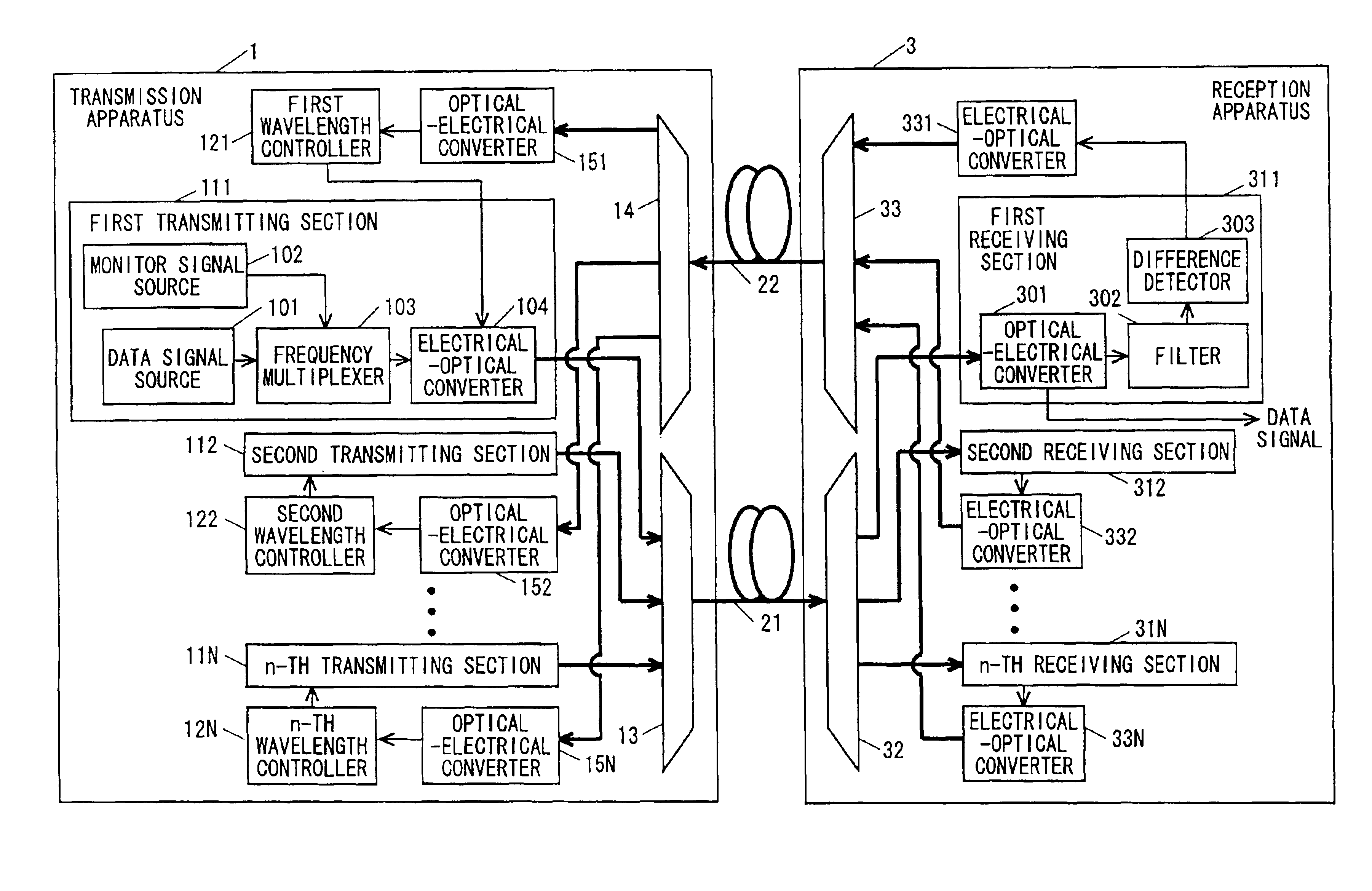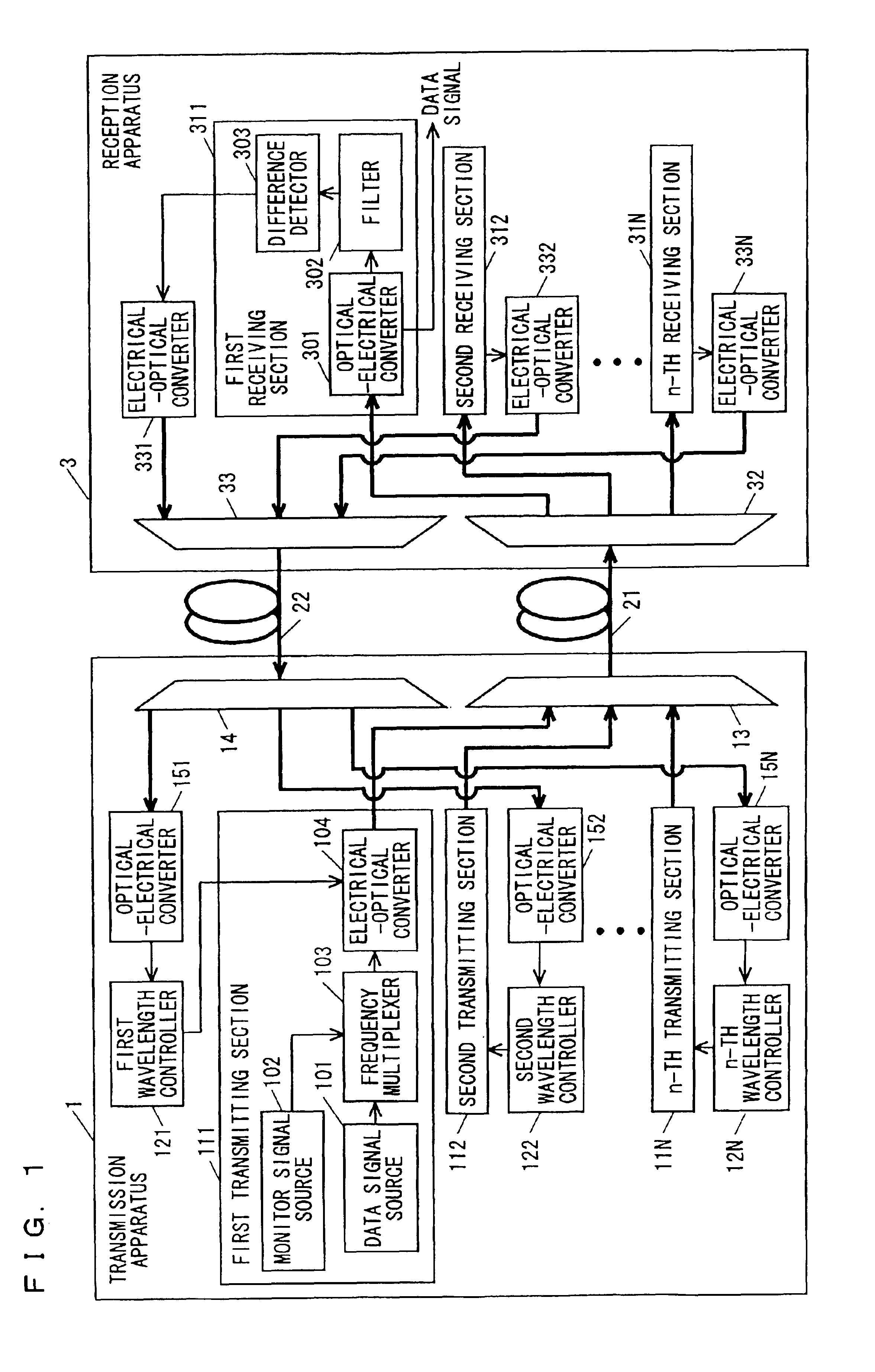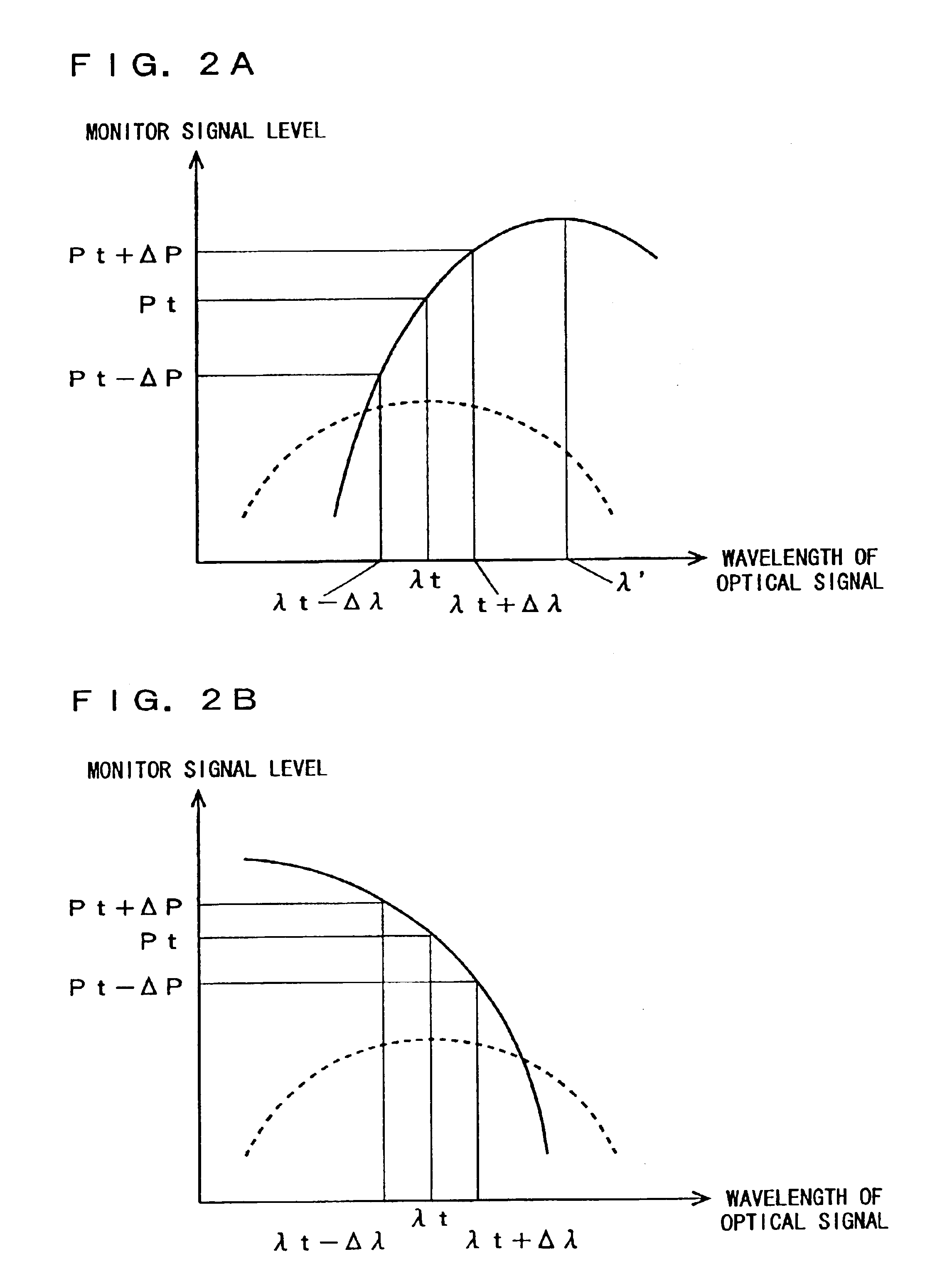Wavelength division multiplex transmission system
a transmission system and wavelength division technology, applied in multiplex communication, instruments, optical elements, etc., can solve the disadvantages of excessive losses, disadvantages of high cost of each transmitting section, and high cost disadvantages, so as to achieve more flexibly stabilize the wavelength
- Summary
- Abstract
- Description
- Claims
- Application Information
AI Technical Summary
Benefits of technology
Problems solved by technology
Method used
Image
Examples
first embodiment
[0056](First Embodiment)
[0057]A wavelength division multiplex transmission system according to a first embodiment of the present invention is described below. FIG. 1 is a block diagram illustrating the configuration of a wavelength division multiplex transmission system according to the present invention. In FIG. 1, the wavelength division multiplex transmission system includes a transmission apparatus 1, first and second optical transmission paths 21 and 22 typified by optical fibers, and a reception apparatus 3. The transmission apparatus 1 includes first through N-th transmitting sections 111 through 11N, first through N-th wavelength control sections 121 through 12N, a wavelength multiplexer 13, a wavelength demultiplexer 14, and N optical-electrical converters 151 through 15N. The reception apparatus 3 includes first through N-th receiving sections 311 through 31N, a wavelength demultiplexer 32, N electrical-optical converters 331 through 33N, and a wavelength multiplexer 33.
[0...
second embodiment
[0076](Second Embodiment)
[0077]Next, a wavelength division multiplex transmission system according to a second embodiment is described below. FIG. 5 is a block diagram illustrating the configuration of the wavelength division multiplex transmission system according to the second embodiment. In FIG. 5, components similar in operation to those according to the first embodiment are provided with the same reference numerals, and are briefly described herein.
[0078]InFIG. 5, the wavelength division multiplex transmission system includes the transmission apparatus 1, the first and second optical transmission paths 21 and 22, and the reception apparatus 3. The transmission apparatus 1 includes the first through N-th transmitting sections 111 through 11N, first through N-th wavelength adjusters 161 through 16N, the wavelength multiplexer 13, the wavelength demultiplexer 14, and the N optical-electrical converters 151 through 15N. The reception apparatus 3 includes first through N-th receivin...
third embodiment
[0087](Third Embodiment)
[0088]FIG. 6 is a block diagram illustrating the configuration of a wavelength division multiplex transmission system according to a third embodiment of the present invention. The wavelength division multiplex transmission system includes N transmitting sections 1101 through 110N, a wavelength multiplexer 13, an optical transmission path 21, a wavelength demultiplexer 32, and N receiving sections 1301 through 130N. The transmitting section 1101 includes a semiconductor laser 41, a wavelength controller 121, a monitor signal source 102, a current source 44, a polarity inverter 45, a multiplexer 46, and an intensity modulator 47. The receiving section 1301 includes an optical-electrical converter 301 and a control signal generator 62.
[0089]With reference to FIG. 6, the function of each component according to the present embodiment is described below.
[0090]The semiconductor laser 41 outputs light. The wavelength controller 121 controls a center wavelength λ0 of ...
PUM
 Login to View More
Login to View More Abstract
Description
Claims
Application Information
 Login to View More
Login to View More - R&D
- Intellectual Property
- Life Sciences
- Materials
- Tech Scout
- Unparalleled Data Quality
- Higher Quality Content
- 60% Fewer Hallucinations
Browse by: Latest US Patents, China's latest patents, Technical Efficacy Thesaurus, Application Domain, Technology Topic, Popular Technical Reports.
© 2025 PatSnap. All rights reserved.Legal|Privacy policy|Modern Slavery Act Transparency Statement|Sitemap|About US| Contact US: help@patsnap.com



